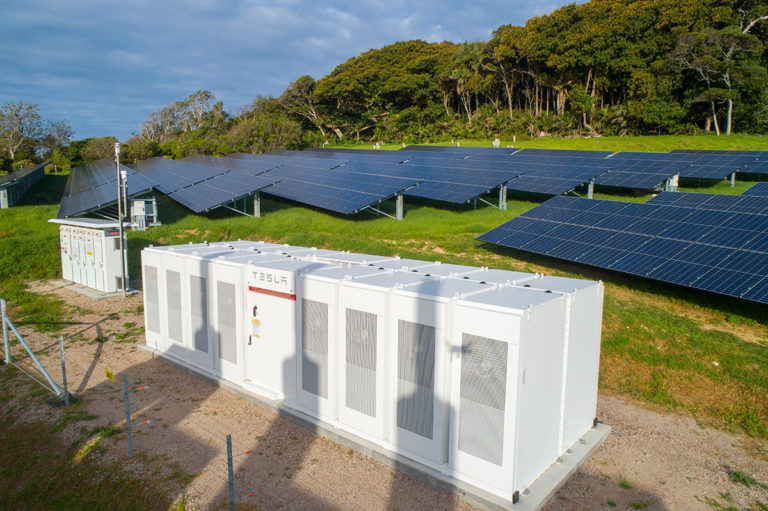Solar Power Blog

What is a Microgrid?
Whether or not you’ve been paying attention to the news in the last decade, you may have heard the term “microgrid,” and not thought twice about what it may mean.
Although microgrids have been around for a long time, public interest in the technology is spiking, largely due to the lowering costs and increased availability of renewable energy generation around the world.
In this high-level guide, we’ll explain everything you need to know about microgrids to demonstrate their value and showcase their role in a more sustainable global future.
Defining Microgrids
Compared to the large, interconnected electric utility grids in the United States, “micro” grids are essentially a smaller version of the way that most people receive their power.
To put it simply, MicrogridKnowledge.com defines a microgrid as a “self-sufficient energy system that serves a discrete geographic footprint, such as a college campus, hospital complex, business center, or neighborhood.”

Most modern microgrids are connected to the larger utility power grid, with the ability to disconnect and operate independently whenever necessary. Alternatively, there are also “standalone” and “isolated” microgrids that operate completely on their own, as an “electrical island” away from utility infrastructure.
In the 2020s, “mobile microgrids,” utilize energy generation and storage on wheels to deliver power anywhere in the world. While some mobile microgrids are massive, military-grade, and intended for many users, even solar power generators can be considered “micro-microgrids” by creating, storing, and deploying relatively small amounts of renewable electricity in one compact circuit.
The Benefits of Microgrids
Efficiently operating microgrids create an immense amount of value for their users, with the primary benefit as energy security. As a self-sustaining system for electricity generation and use, microgrids allow continued access to power even when there is a local blackout.
In an era where wildfires, winter storms, and other major weather events are causing many corners of the world to shut down for hours and even days at a time, energy security is invaluable. Microgrids allow critical operations to keep power, including shelter, communications, medical services, and even electric transportation for local communities.
As an added bonus, microgrids make it very easy to incorporate renewable and emission-free power generation into local energy production. By utilizing resources like solar and wind energy, microgrids can drive down the production of emissions that increase the severity of climate-related disasters while also lowering or stabilizing local electricity costs.
How do Microgrids Work?
Microgrids work by continuously creating electricity and distributing it to the end users, storing it in a battery when necessary. Although the technology has advanced to become even smarter in recent years, today’s microgrids typically consist of three main components:
- Power generation
- Energy storage
- End-user distribution
Historically, microgrids primarily utilized fossil-fueled combined heat and power (CHP) reciprocating engine generators. Today, most modern microgrids are powered by renewable energies like wind and solar power to provide the system’s independence. Alongside clean energy production, however, most existing microgrids also support gas-powered generators to diversify the electricity sources.
In large, integrated microgrids, users will typically be able to operate “as normal” in the buildings connected to the generation and storage. To maximize performance, most smart systems come with advanced monitoring and management settings for efficient energy use onsite.
The Most Common Uses for Microgrids in 2023
As there is an immense amount of research going into microgrid technology at all angles, the capabilities of self-sustained energy systems are essentially endless. With federal plans in place to improve the United States' existing infrastructure, we predict that microgrids will only become more common and advanced in decades to come.
Home Backup Electricity

While some purists will challenge us on this definition, a home with solar panels and battery storage is essentially a small-footprint microgrid. In conjunction with an electric vehicle, home microgrids can even be used to power your transportation during a blackout or visa-versa with new “vehicle to home” charging capabilities.
Natural Disaster Preparedness & Relief
Whenever there is a flood, fire, or large natural disaster, mobile microgrids can be deployed to re-grant locals with electricity access to power cell phones and other important devices. Even more so, places like Puerto Rico are building the microgrids necessary to prepare emergency shelters across the island for future hurricanes.
Financial Savings
By disconnecting from the main utility grid and self-consuming electricity, companies, businesses, and organizations both large and small have the power to reduce their short and long-term energy costs with a microgrid installation. Although considerable investment is required, the results can be incredible, such as how the Pittsburgh International Airport achieved $1 million in energy savings within its first year of operation.
Conclusion
Essentially, microgrids have the unique ability to continuously supply electricity anywhere in the world. From the smallest house on the block to the massive medical facility downtown, microgrids are becoming more and more common every year to support energy security both in preparation for and recovery from local electrical blackouts.
Creating your own emergency microgrid is easy when you install solar panels and batteries on your property. By continuously generating and storing your own electricity, a renewable energy microgrid grid can help replace or support your backup home generator with less noise and lower costs to fuel the next time the power goes out.
Have a question? Contact Solar Us Shop to learn more.

